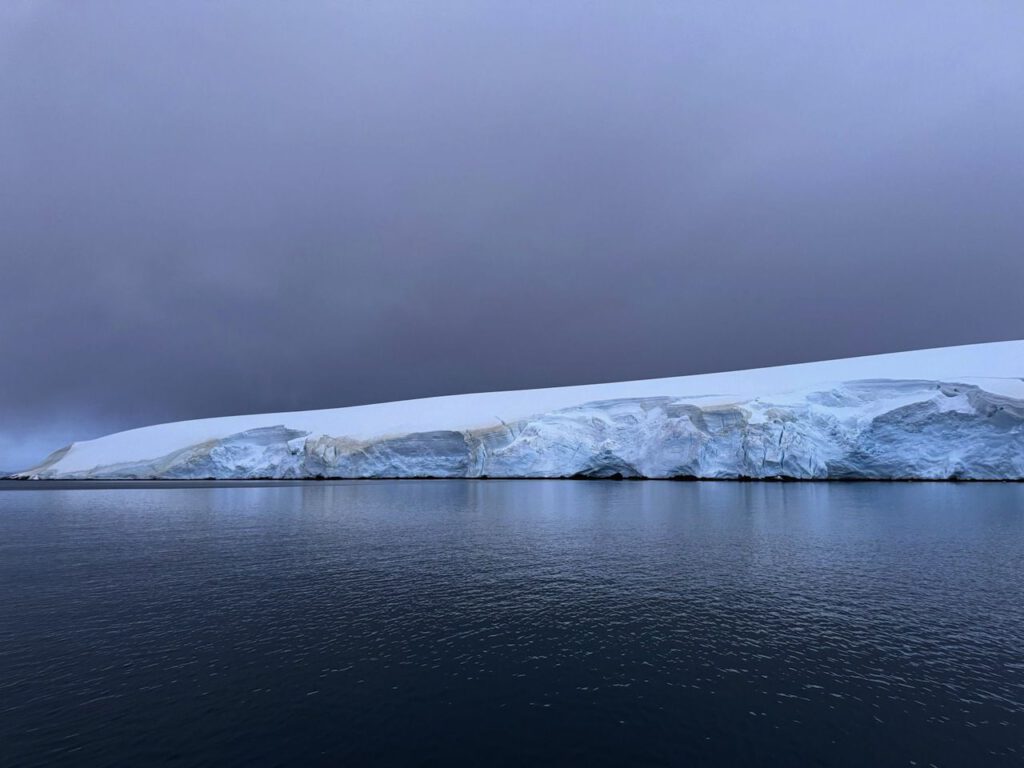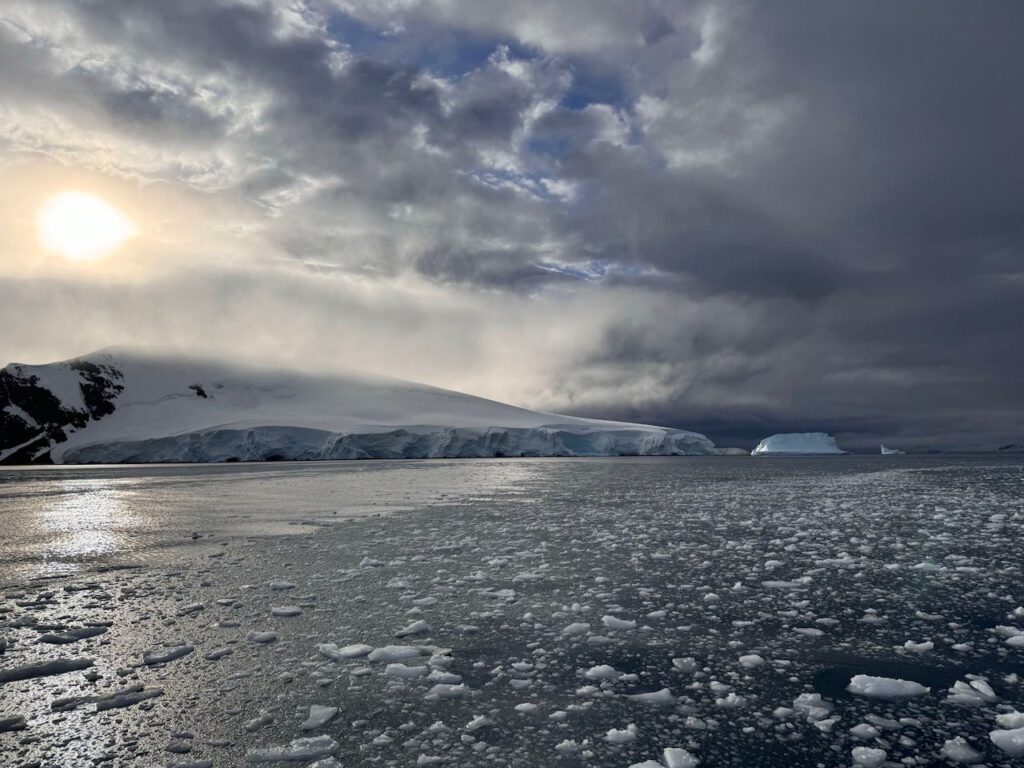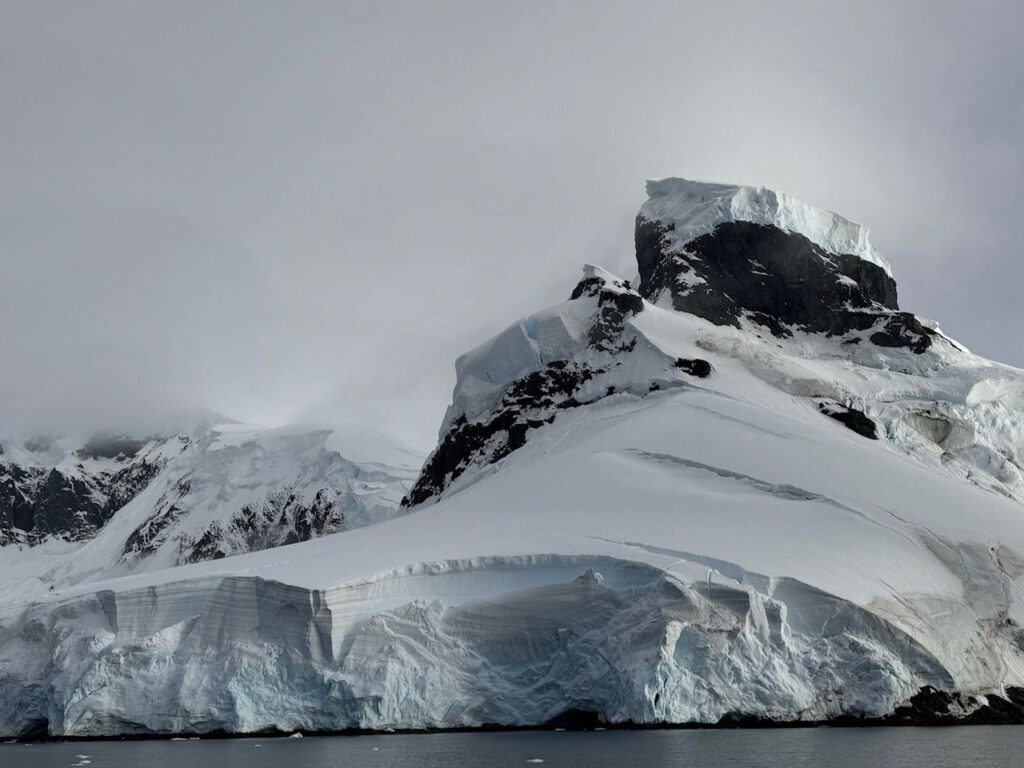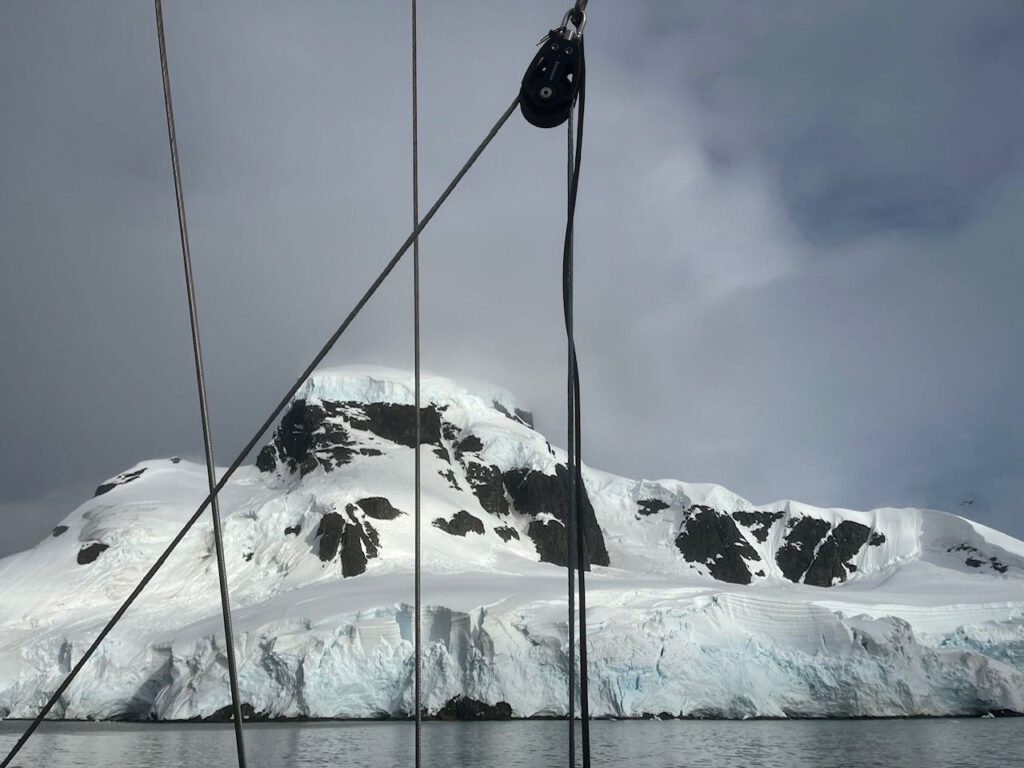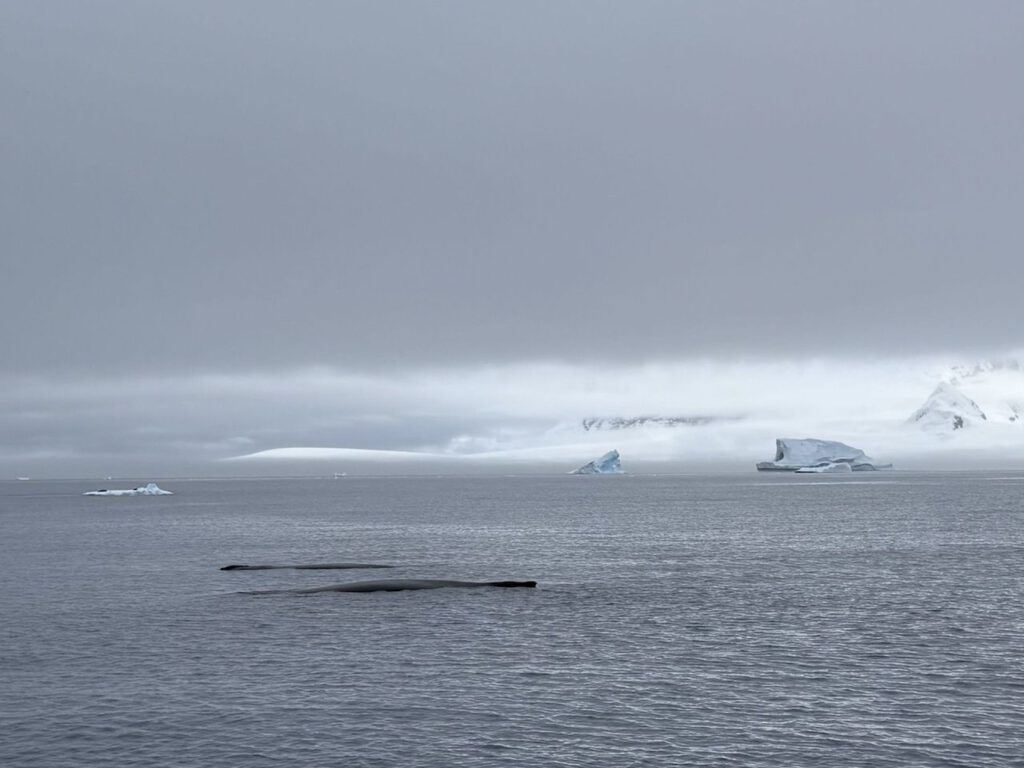Hot Spots
On the way north from Vernadsky Station, we pass the north-west coast of the Antarctic Peninsula, the part most frequently visited by Antarctic tourists. Easily accessible, mostly ice-free in summer, only the Drake Passage has to be passed on the way here from Ushuaia. The number of expedition cruise ships has increased dramatically in recent years, as has the number of tourists, and the number of landings at particularly popular, easily accessible locations has increased accordingly. There are strict schedules, tight time slots and every single landing has to be registered and booked in advance.
Fortunately, we’ve mostly spent the last few weeks in remote areas, in the Weddell Sea or far to the south. Only here on the west coast, around the Lemaire Channel, have we occasionally spotted a cruiser. But now the season is coming to an end, the Antarctic summer is already giving way to fall, many ships are already back in the north, even the much-visited places are lonely and deserted again.
So we took the opportunity to call at some of the tourist hotspots on our way and spent the last few days doing a bit of sightseeing on the north-west coast.
Port Lockroy
On Wednesday we left Vernadsky and passed the Lemaire Channel a second time, this time heading north. It was autumn and the entrance was icy. Whales accompanied us, on the north side we were greeted by cold winds of 25 knots from the north and a strong wave on the nose.
Port Lockroy is located on the west coast of Wiencke Island in the Palmer Archipelago. The natural harbor was discovered by the fourth French Antarctic expedition (1904-1905) led by polar explorer Jean-Baptiste Charcot and was later used for whaling. The British research station A was operated on the neighboring Goudier Island until 1962. Renovated in the 1990s, it is now used as a museum and souvenir store. It is also home to the southernmost post office in the world. This makes Port Lockroy one of the most popular destinations for Antarctic cruise ships. But the season is almost over and we are alone in Port Lockroy.

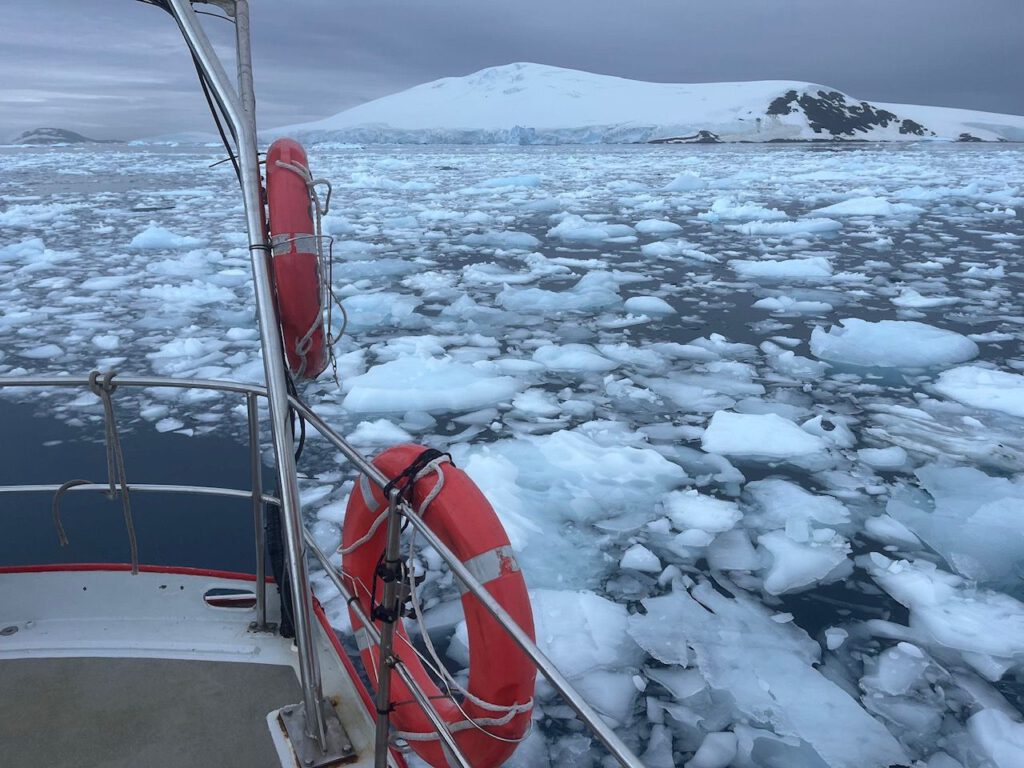
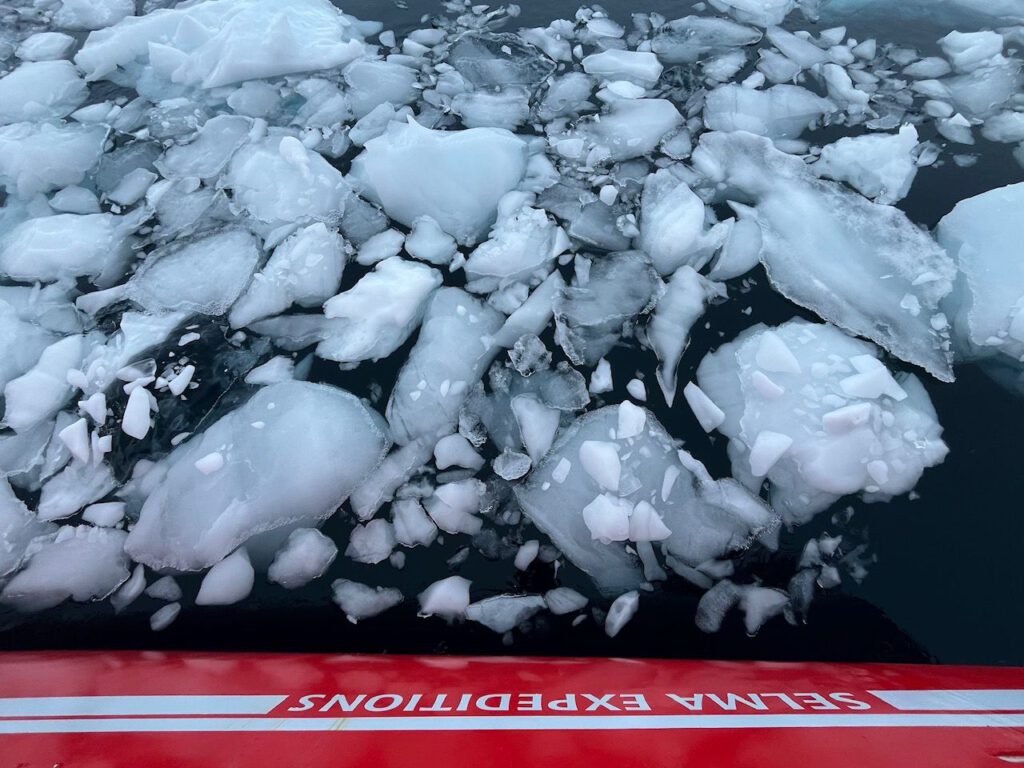
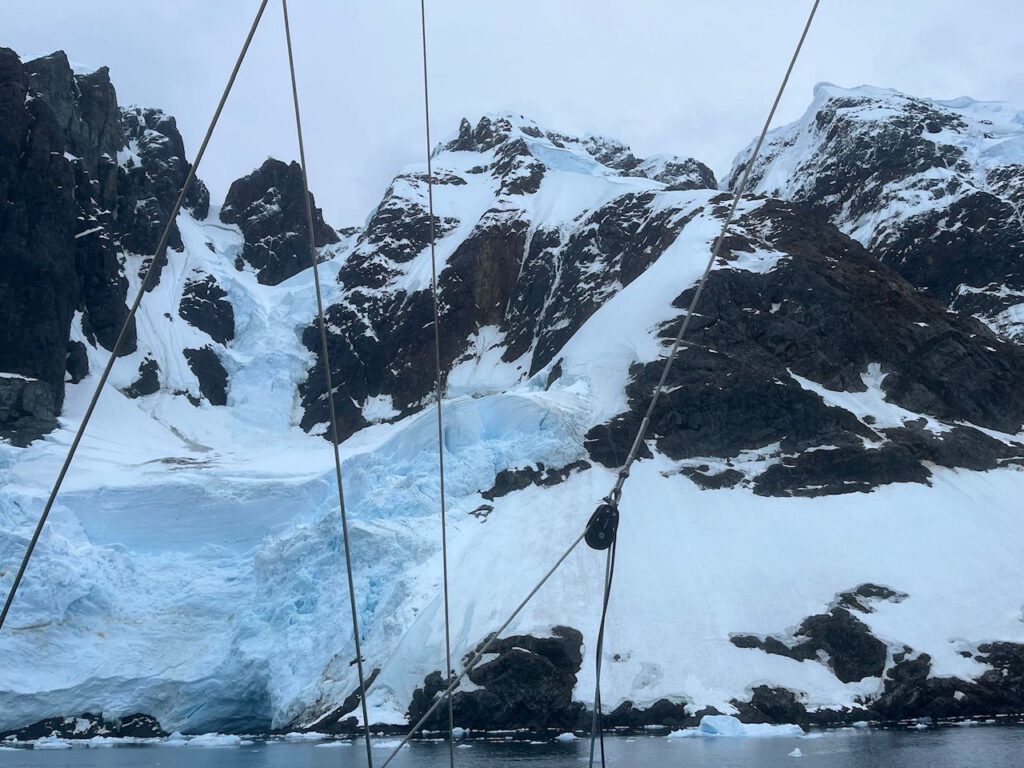
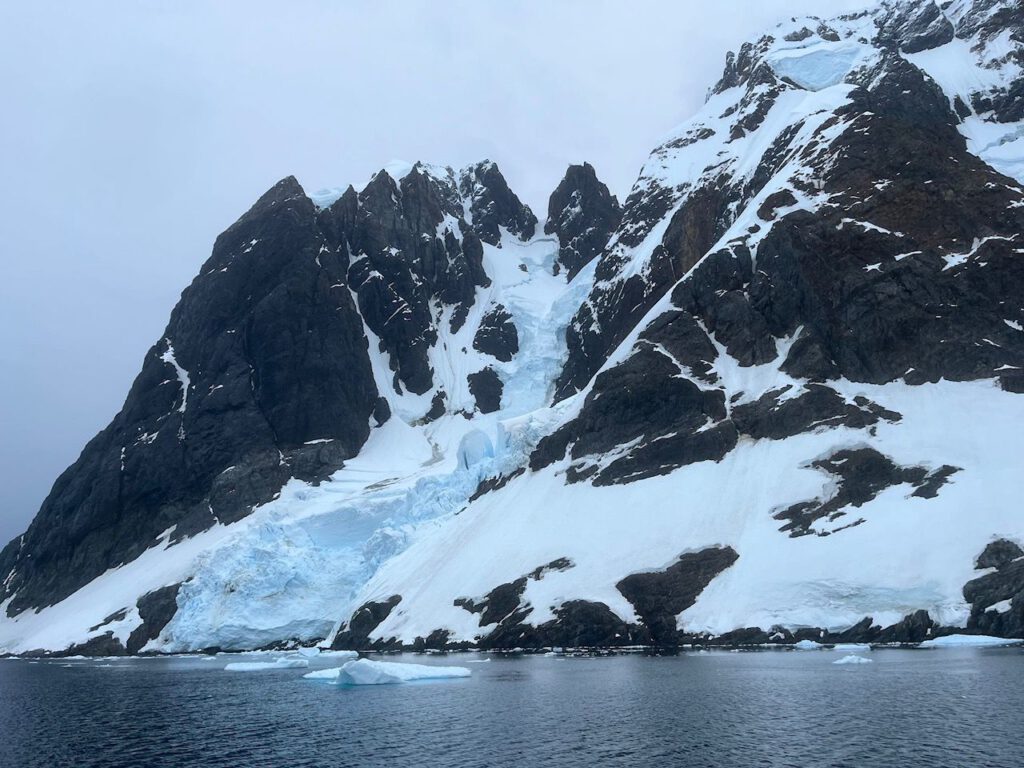

Almost: A large colony of Gentoo penguins lives on the island. The station/museum is also still occupied, although it has been closed for some time due to bird flu and is not open to visitors. We contact the station and are told that we are welcome to post mail if we wish. However, this would only be processed and sent via Falklands at the beginning of the coming season, as the departure of the staff is imminent.
We like the idea of surprising our loved ones at home with a postcard from Antarctica in a good year’s time or receiving one ourselves (should it arrive). Although we can’t buy one in the local souvenir store, we can still find a few on the Selma. We write diligently to families, friends, each other … , collect British pounds for postage and later hand over our mail to the station by dinghy.
The penguin colony cavorts in the immediate vicinity of Jougla Point, a rocky peninsula. In the middle of the colony lie vast quantities of whale bones, which Jacques-Yves Cousteau collected here many years ago to form an almost complete skeleton. Remnants of the whaling times in this bay. As always, the colony is a hive of activity. Chicks, changing from fluffy child fluff to adult plumage, chase after their parents, insistently demanding one meal after another. Again and again, a large portion of previously caught krill is transferred from the parents’ beaks to those of their chicks.
Penguins stand motionless on the rocks, some disheveled and patiently enduring their moult. Others wander from here to there, following a plan or destination that is not always clear to the observer. They don’t seem to be particularly impressed by our presence – they are probably used to completely different crowds here.

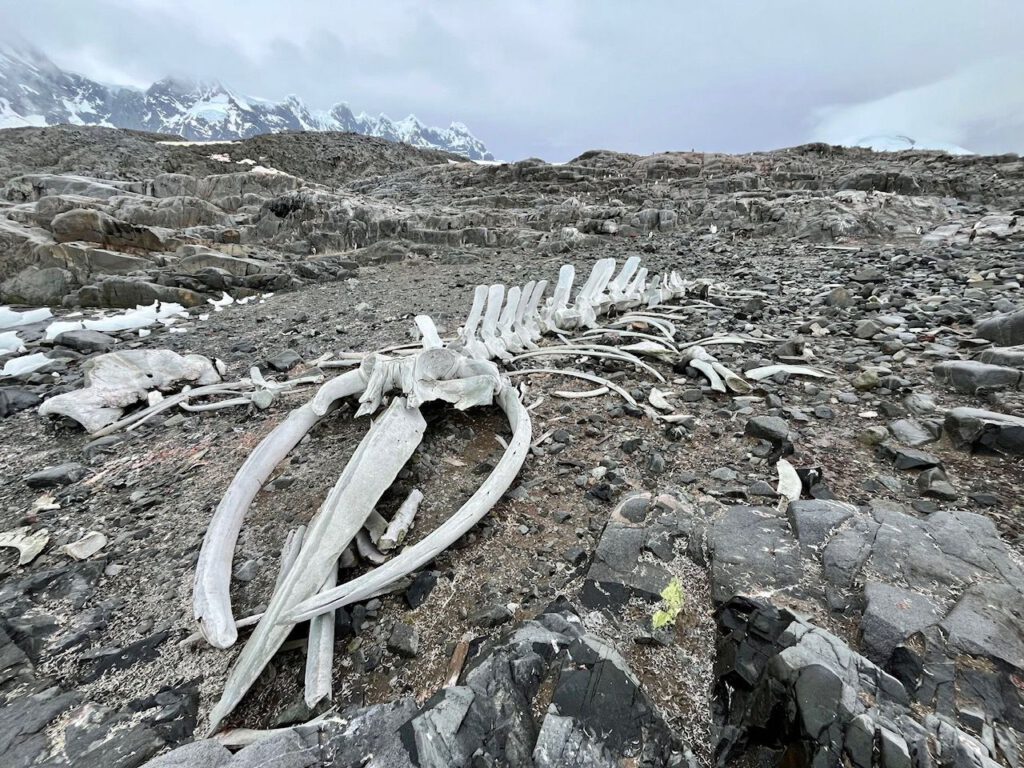
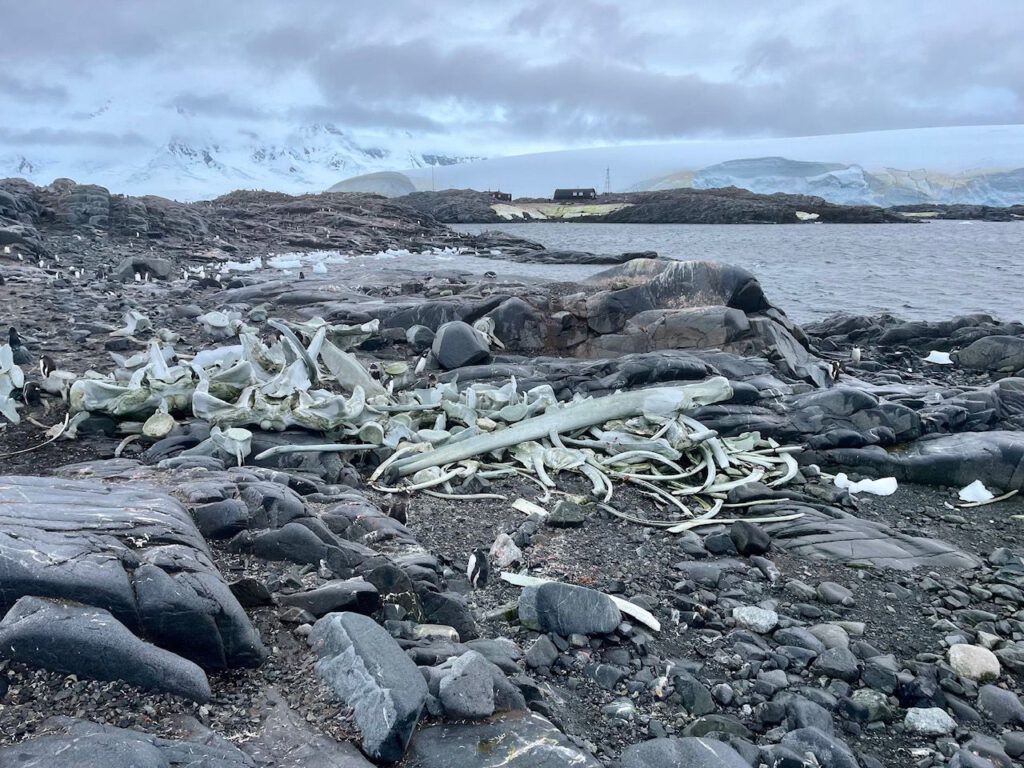
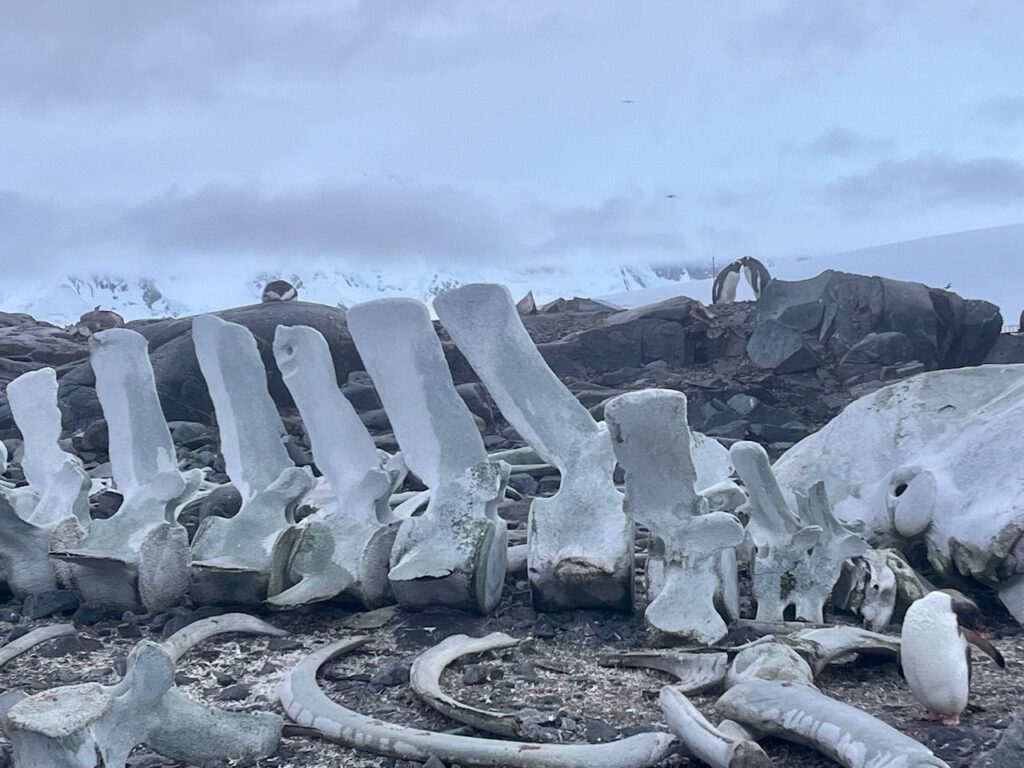
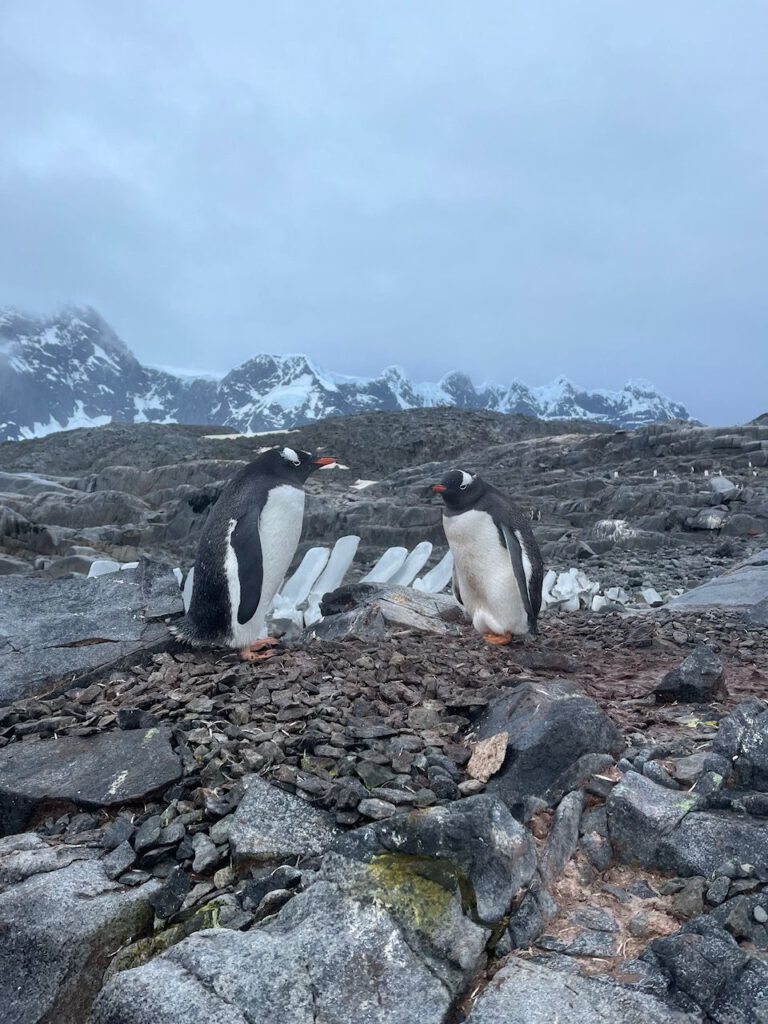
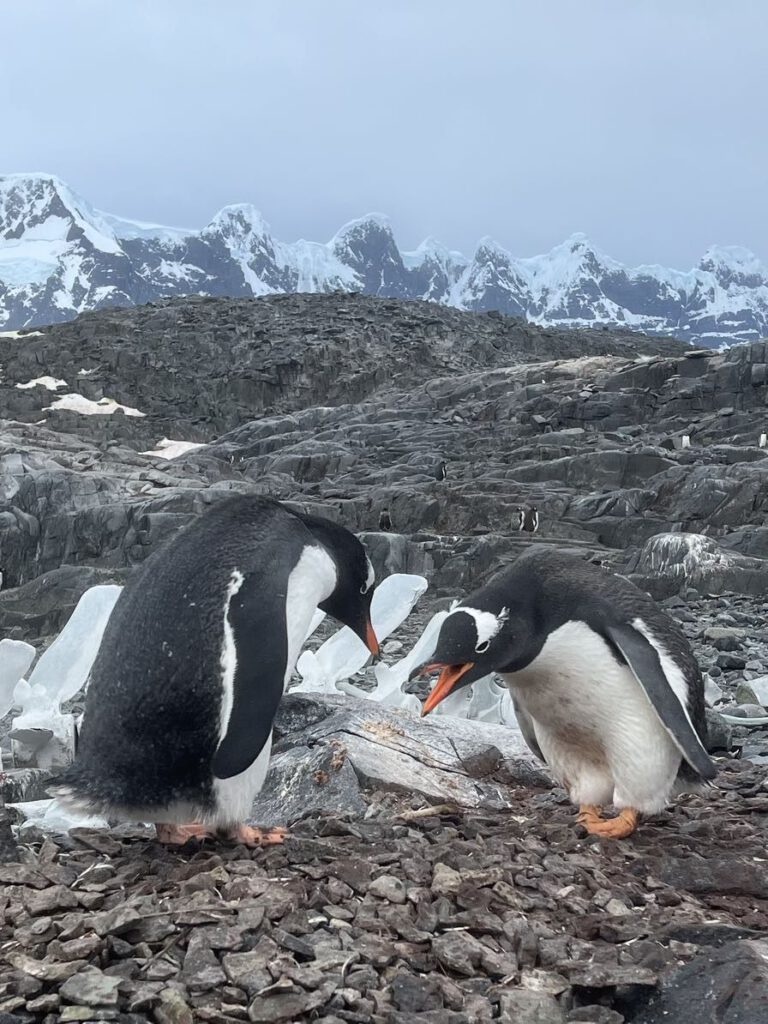

The wind picks up and we make our way back to Selma. It takes several attempts to cast off with the dinghy between the many rocks in the onshore wind.
We continue the next morning, it is gray and cold. A light drizzle is followed by a few patches of sunshine that make the icebergs floating in the distance glitter or glow on the dark gray water. A rising wind gives us hope of being able to set sail, but it falls asleep again. Fog rolls in, and unfortunately we see little of the spectacular scenery of the Neumayer Channel in the glassy sea. Later, in the Gerlache Strait, we encounter whales again. Everywhere you look. Sleeping, migrating, hunting, feeding whales. Far away, close, very close, right next to the Selma. These encounters, the sounds are always deeply impressive.
